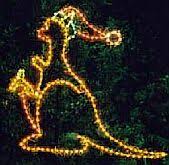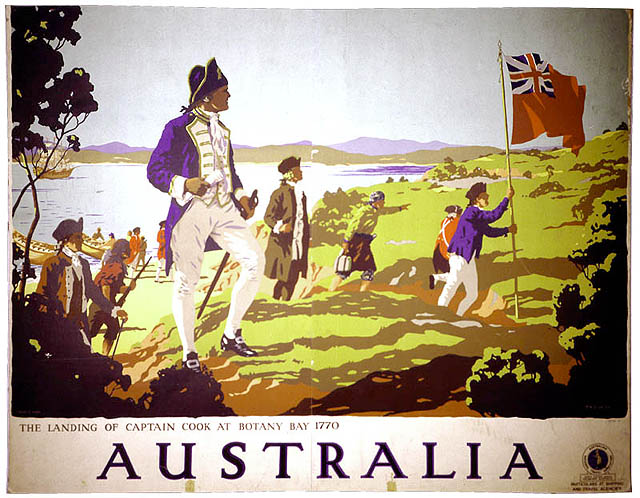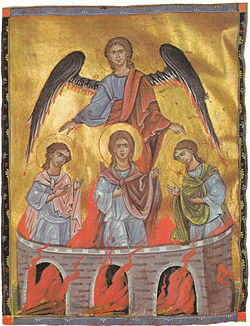Holidays in Australia are somewhat of a complicated matter.
It seems that each territory determines which holidays are public holidays
(where there is a day off of work and school) and which are merely celebrated
at work. And some holidays are celebrated on different days in different
territories. There are a few that are celebrated by all of them. I’ve put in
brackets which territories that celebrate the holidays mentioned (thanks to a
really nice chart found on Wikipedia).
NOTE: ACT = Australian Capital Territory; NSW = New South
Wales; NT = Northern Territory; QLD = Queensland; SA = South Australia; TAS =
Tasmania; VIC = Victoria; WA = Western Australia
New Year’s Day.
January 1. [ALL] Government offices, many businesses and schools are
closed on New Year’s Day. Because it’s summertime in Australia, many people
will spend the day having picnics and doing other outdoor activities.
Australia Day. January 26. [ALL] Many people use this day as a day of picnics and barbecues.
Sometimes cities and town will have large-scale barbecues and outdoor
activities. It’s also a common and appropriate time for people to have citizenship
ceremonies.
Royal Hobart Regatta. 2nd Monday in February.
[Hobart area of Tasmania only] Started in 1838, this 3-day even is the oldest
sport in Tasmania. It not only covers boat racing, but other aspects of water
sports (sailing, rowing, swimming, etc.). It takes place on the Derwent River.
Labor Day. 1st Monday in March. [WA] Australians
take advantage of the 3-day weekend by spending time outdoors, barbecuing, and
perhaps taking a short trip somewhere. In certain cities, labor unions will
have parades and key speeches will be led by the city’s leaders. [Labor Day is
also called Eight Hours Day in Tasmania and May Day in the Northern Territory.]
Adelaide Cup. 2nd Monday in March. [SA] First run
in 1864, this horse race is really important to South Australia. Like the
Kentucky Derby, this is more than a horse race, it’s a social event. People
dress in their best dress to attend the day-long event; there are a series of
eight races each about 40 minutes apart. If you’re not lucky enough to attend,
it is shown on television.
Canberra Day. 2nd Monday in March. [ACT] This is
a holiday that celebrates the city of Canberra since its founding in 1913.
Across the city, there are many different activities for all ages and all
interests, including films, music, sporting events, and cultural displays. The
city will also name a Citizen of the Year, based on their work in the
community.
Eight Hours Day. 2nd Monday in March. [TAS]
Australians take advantage of the 3-day weekend by spending time outdoors,
barbecuing, and perhaps taking a short trip somewhere. In certain cities, labor
unions will have parades and key speeches will be led by the city’s leaders.
Labor Day. 2nd Monday in March. [VIC] Australians
take advantage of the 3-day weekend by spending time outdoors, barbecuing, and
perhaps taking a short trip somewhere. In certain cities, labor unions will
have parades and key speeches will be led by the city’s leaders.
Good Friday. Movable holiday. [ALL] For Christians in
Australia, people will attend at least one church service on Good Friday. For
others, it’s a time to enjoy the long weekend by spending time outdoors,
perhaps with a barbecue with family.
Easter Saturday. Movable holiday. [ACT, NSW, NT, QLD, SA, VIC]
For some Christians, there may be church services held. For others, this is
part of a long holiday weekend and may be spent outdoors.
Easter Sunday. Movable holiday. [NWS] Because Easter follows a period of fasting (during
Lent) for many people, Easter is a time of celebration that includes a lot of
food. Australians also do the decorated Easter egg tradition as well. Some
cities will even have workshops to teach decorating ideas, such as in the
Ukrainian style of egg decorating. There is a movement aimed at offering a chocolate bilby instead of chocolate bunnies since rabbits are often considered pests in Australia
Easter Monday. Movable holiday. [ALL] Easter Monday is spent
with family. There are also a lot of music fests and sporting events that take
place on Easter Monday, since businesses and schools are closed.
Easter Tuesday. Movable holiday. [TAS] Only in Tasmania to
they also get the Tuesday after Easter off as well. I’m going to venture to say
that it’s spent pretty much in the same way that the long weekend has been
spent.
ANZAC Day. April 25. [ALL] Considered one of Australia’s
most important national holidays. ANZAC stands for Australia New Zealand Army
Corps and commemorates the first military action by Australia-New Zealand
forces during World War I. There is always a memorial service that is held at
10:15am and is followed by people placing red poppies besides the names of
relatives who are listed on the Memorial’s Roll of Honor. I imagine red poppies
are used because of the famous poem “In Flanders Field” by Col. John McCrae,
where he mentions red poppies growing on the graves of fallen soldiers.
Labor Day. 1st Monday in May. [QLD] Australians
take advantage of the 3-day weekend by spending time outdoors, barbecuing, and
perhaps taking a short trip somewhere. In certain cities, labor unions will
have parades and key speeches will be led by the city’s leaders.
May Day. 1st Monday in May. [NT] Australians take
advantage of the 3-day weekend by spending time outdoors, barbecuing, and
perhaps taking a short trip somewhere. In certain cities, labor unions will
have parades and key speeches will be led by the city’s leaders.
Western Australia Day. 1st Monday in June. [WA]
This is used to commemorate the Swan River Colony back in 1829. It was later
changed to Western Australia.
Queen’s Birthday. 2nd Monday in June. [ACT, NSW,
NT, QLD, SA, TAS, VIC] Most businesses and schools are closed for this day.
There are many sporting events during the day and a large fireworks display at
night. This is the only time of year it is legal for people to buy and set off
fireworks displays on their own.
It’s illegal at all other times, and only a licensed pyrotechnician can
set them off.
Picnic Day. 1st Monday in August. [NT] Initially created for the railway
workers in Darwin so that they could enjoy a day on the Adelaide River for a
picnic. It probably doesn’t take a genius to figure out what people will
usually do on Picnic Day.
Holiday in lieu of Queen’s birthday. Sept/Oct. [WA] This is
the day Western Australia uses to celebrate the Queen’s birthday, since the
rest of the country celebrates it around the time that they are celebrating
Western Australia Day.
Family and Community Day. 1st Monday of 3rd
term school holiday (Sept/Oct). [ACT] This was created as a way for busy
workers to take a break and spend time with their families and friends. It’s
also claimed that Australians work “the longest hours in the western world.” I
don’t know where that figure was attributed from, but I may have to look into
that. But still, it’s a far cry from the United States where The Job doesn’t
want to believe that people might see that their families slightly more
important than work.
Labor Day. 1st Monday in October. [ACT, NSW, SA]
Australians take advantage of the 3-day weekend by spending time outdoors,
barbecuing, and perhaps taking a short trip somewhere. In certain cities, labor
unions will have parades and key speeches will be led by the city’s leaders.
Recreation Day. 1st Monday in November. [non-Hobart areas of Tasmania only] Although
it’s called Recreation Day, a lot of people apparently take this day to catch
up on things they don’t necessarily want to do, like study and household
chores. Although there are people who spend the day with family or doing
outdoor activities. I suppose depending on the family or outdoor activity,
household chores may be the better option.
Melbourne Cup. 1st Tuesday of November.
[VIC-Melbourne area] Another one of Australia’s most popular horse races and
social events. Although there are several local races held throughout the area
on this day, the main race is held at Flemington Racecourse. Wine and gourmet
fingerfoods are served those distinguished guests that are lucky enough to
attend.

Christmas. December 25. [ALL] Many traditions were brought
over from England, and this also holds true for Christmas ones as well. Christmas
cards, caroling, and Christmas trees all stem from these customs. Because
Australia is hot during December, people will also do a lot of outdoor
activities and barbecues around this time as well. Christians will often attend
Christmas Eve or Christmas Day services. Santa Claus is also popular and you
can see him dressed in full costume at area malls and shopping centers. Gift
giving is a popular tradition as well, although it depends on the family
whether they open them Christmas Eve night or Christmas morning. Nativity
scenes are common, but you may also find native Australian animals in with the
traditional animals as well.
Boxing Day. December 26. [ACT, NSW, NT, QLD, TAS, VIC, WA]
This has become a day of sporting events. There is a really important cricket
match that takes place on Boxing Day. In total, these matches may take up to
five days. Another popular event is the Sydney to Hobart yacht race. It used to
take much longer, but now the fastest yacht can make it in about two days. And
if sports aren’t your thing? Don't worry, Boxing Day marks the beginning of end
of the year sales, so shop away.
Proclamation Day. December 26. [SA] South Australia doesn’t
officially celebrate Boxing Day, but rather Proclamation Day. It’s the day used
to commemorate the founding of South Australia as a British province.
New Year’s Eve. December 31. [SA] Many people will have
parties with lots of food, or will barbecue at their homes. Many of these
parties will have different themes to them. There are usually fireworks at
midnight. People of drinking age will often toast to the new year with
champagne or wine.
Up next: Art and Literature
Resources:
Wikipedia: “Public holidays in Australia” “Royal Hobart
Regatta” “Family Day” “Proclamation Day”






























